Motion of a puck on the frictionless surface of a paraboloïd.
Here is the surface, z = p( ![]() ), (we have set, p=1) :
), (we have set, p=1) :
![]()
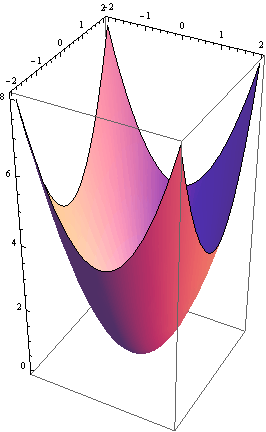
Initial conditions for the puck : x[0]=0, x’[0]=-vx0, y[0]=y0, y’[0]=0, z[0]=![]() , z’[0]=0. Its motion results from the conjugated action of gravity (g) and of the contact with the surface. Friction is absent.
, z’[0]=0. Its motion results from the conjugated action of gravity (g) and of the contact with the surface. Friction is absent.

![]()
A typical trajectory :
![]()
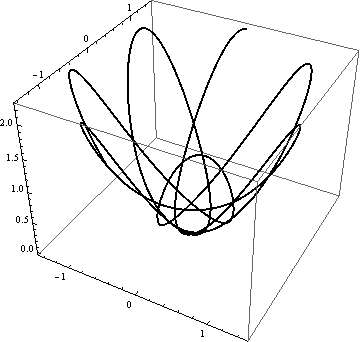
![]()
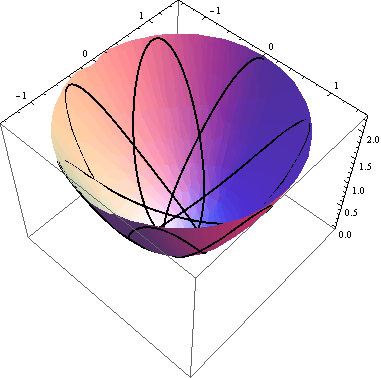
![]()
By suitably adjusting the initial conditions you can obtain a stable circular trajectory : Take ![]() +
+![]() =2g z[0].
=2g z[0].
![]()
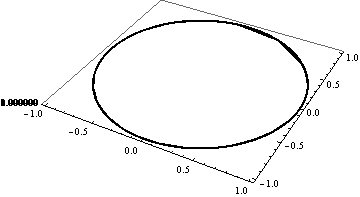
![]()
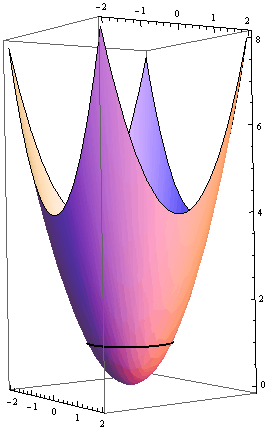
![]()
What if gravity is absent ? The only force is the upward action due to the contact with the surface : the puck “rises” spiraling in the direction of positive z !
![]()
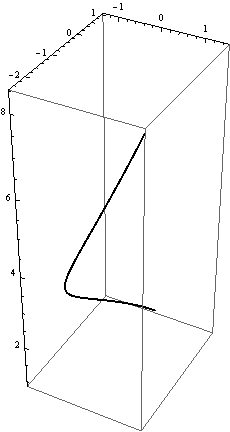
![]()
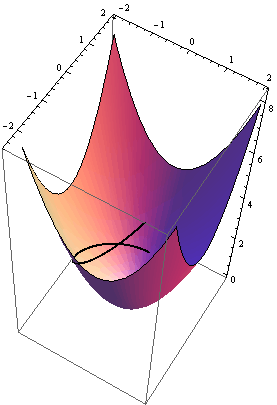
![]()
Comment : in all cases, the puck minimizes the constraint (Gauss principle). If gravity is absent this is equivalent to saying that the puck looks for the least curvature or equivalently it follows a geodesic. If tangential friction is taken into account (f=k N), the minimim constraint principle remains valid so that dissipation is also minimized. This is a special example of the so-called Minimum entropy principle.
![]()
Addendum : Newton equations of motion.
When a particle is forced to stay on the surface, z= f(x,y), and is acted upon by a force F=(![]() ,
, ![]() ,
, ![]() ), the equations of motion are :
), the equations of motion are :![]() -mx’’+(
-mx’’+(![]() -m z’’)
-m z’’)![]() =0 and
=0 and ![]() -my’’+(
-my’’+(![]() -m z’’)
-m z’’)![]() =0
=0
Verify that the (square of the) constraint, ![]()
Remember that :
![]()
![]()
![]()
![]()
![]()